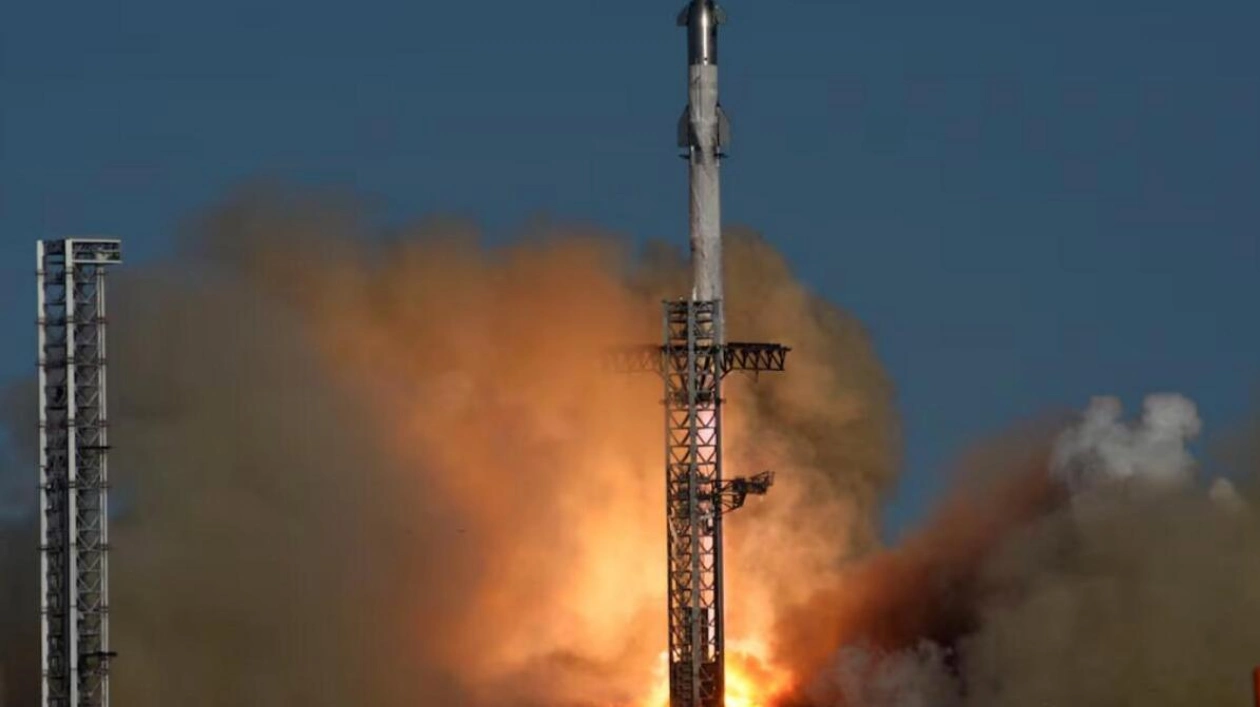Photo: Reuters
Elon Musk's SpaceX successfully launched its colossal Starship rocket into space from Texas on Tuesday, showcasing the spacecraft's potential for space travel. However, the mission experienced a setback when the booster failed to return to land as planned, instead landing in the Gulf of Mexico. The event was closely watched by US President-elect Donald Trump, who was present at SpaceX's rocket facilities.
The approximately 400-foot-tall (122-metre-tall) rocket system, designed to transport astronauts to the moon and eventually to Mars, took off from SpaceX's expansive rocket development site in Boca Chica, Texas. The rocket's 233-foot-tall (71-metre-tall) first stage booster, known as Super Heavy, separated from its second stage, Starship, at an altitude of about 40 miles (62km), propelling the craft into space. Instead of landing on the mechanical arms attached to the launch tower, Super Heavy unexpectedly landed in the Gulf of Mexico, suggesting an issue with the landing procedure.
In space, Starship orbited Earth and successfully executed a daytime splashdown in the Indian Ocean about an hour later. This mission marked the first time Starship reignited one of its onboard engines in space, a significant step in testing its maneuverability. NASA chief Bill Nelson, who is set to step down once Trump assumes office in January, congratulated SpaceX on X, highlighting the importance of the in-space engine reignition for future orbital flights.
Trump's presence at the event underscores the growing partnership between him and Musk, who is poised to gain substantial benefits from Trump's presidency. As the CEO of both SpaceX and Tesla, Musk is expected to exert significant influence to support his companies and secure advantageous government policies. Musk, the world's wealthiest individual, was a prominent supporter of Trump's presidential campaign, contributing at least $119 million in political support and appearing alongside him at rallies.
Source link: https://www.khaleejtimes.com






